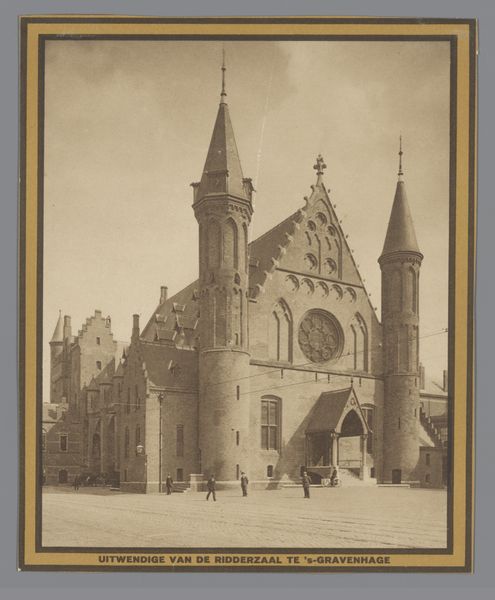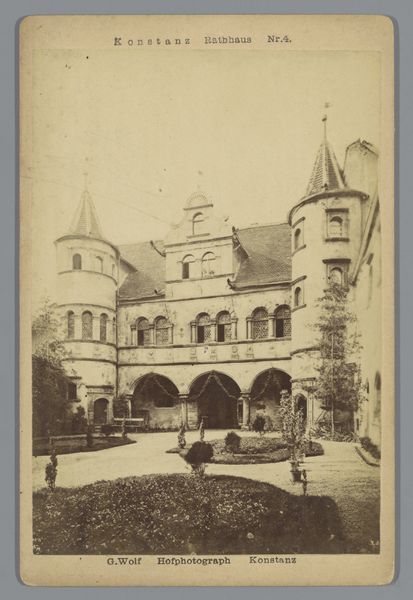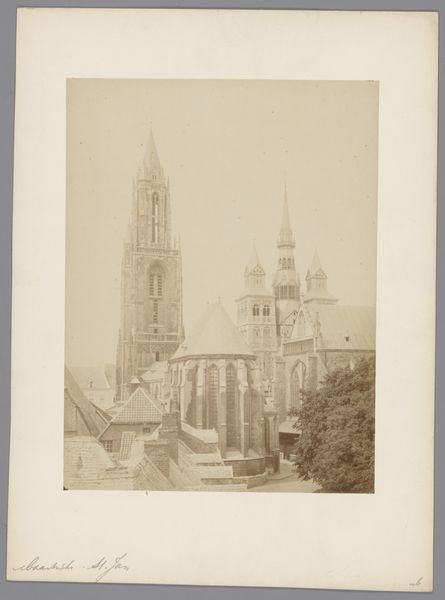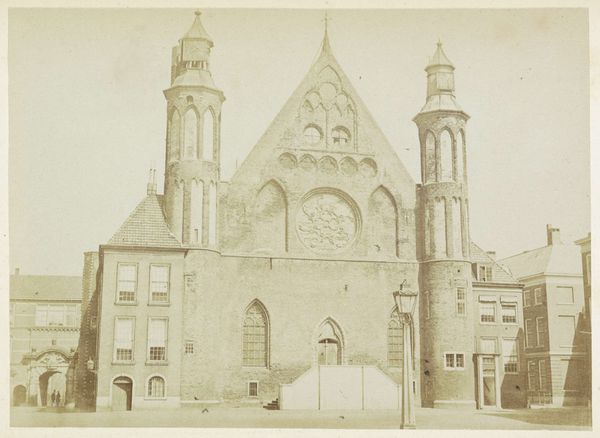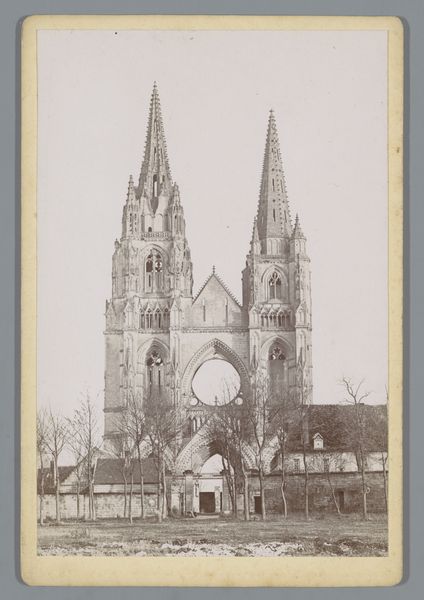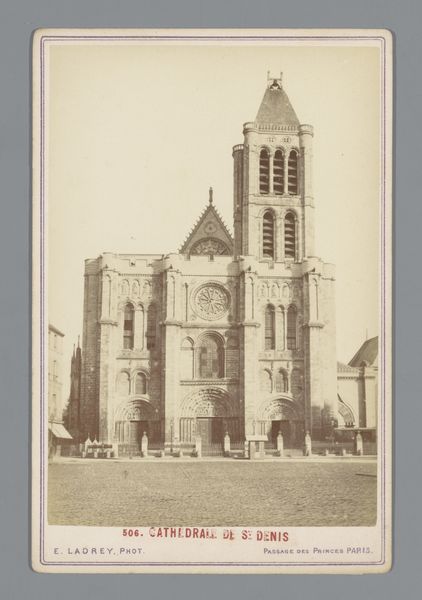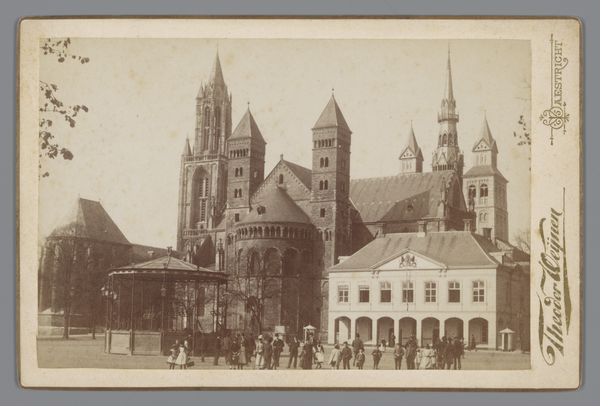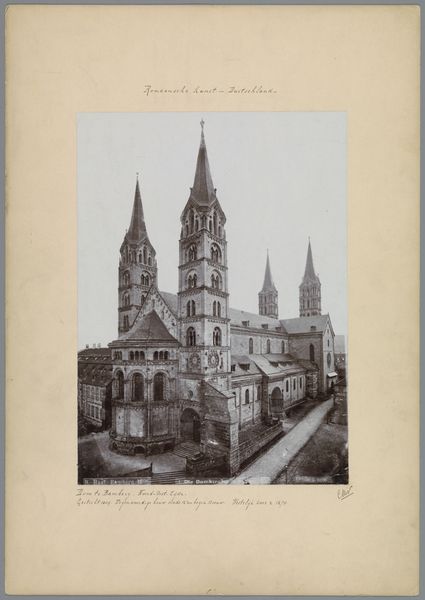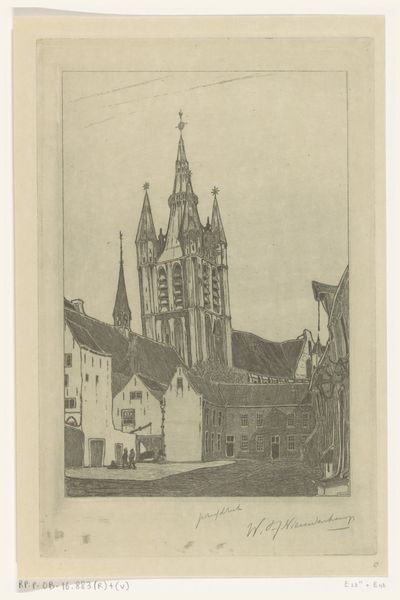
print, photography, site-specific, gelatin-silver-print
# print
#
photography
#
photojournalism
#
site-specific
#
gelatin-silver-print
#
cityscape
#
realism
Dimensions: height 165 mm, width 124 mm
Copyright: Rijks Museum: Open Domain
Curator: Welcome. This photograph, titled "Gezicht op de Grafelijke zalen in Den Haag," likely captured between 1850 and 1925 by Christiaan Maria Dewald, showcases the iconic building. The print, made using gelatin silver, gives a sharp view of the old structure. Editor: My first impression is of a certain stoicism, a visual language of history and permanence, especially considering the gray scale tones. The architectural elements speak of tradition, though the people nearby look decidedly humble against such formidable backdrop. Curator: Precisely. Dewald expertly frames the Grafelijke Zalen, drawing our attention to the symmetrical facade and its robust structure. Note how the twin towers create a vertical rhythm, counterpointed by the horizontal lines of the building’s body. Editor: But what were these halls? We need to consider the Grafelijke Zalen within the Dutch historical context. The use of architecture—particularly that associated with government—often conveyed assertions of power, influencing public opinion, and reinforcing social stratification. How do you think this image serves those ends, either deliberately or accidentally? Curator: The photograph provides a near perfect representation of realism by depicting architecture in that era. Also, in technical aspects, the use of gelatin silver contributes to the clarity and tonal range evident here, emphasizing architectural details that define the space. Editor: Yes, but it isn’t just architecture we are looking at. The choice to show the everyday person in front of this great architecture places power, governance and legacy firmly in context. What the person symbolizes is of note: that the halls can still hold an everyman in the photo tells me that legacy can persist as common inheritance and part of every Dutch citizens heritage. Curator: I find that an interesting position and reading of the subject of the photograph as it applies to Dutch national character and that may provide a pathway to further analyze the subject's placement in this case. Editor: Indeed. Examining historical images like this—through the lens of power, representation, and ordinary existence—reveal deeper social textures than its construction alludes.
Comments
No comments
Be the first to comment and join the conversation on the ultimate creative platform.
